Kitchens serve as the heart of our homes—where we cook, gather, and create memories. Upgrading this essential space doesn’t always require a complete renovation. Strategic improvements like adding a farmhouse kitchen sink, refreshing surfaces with countertop paint, or expanding your cooking area with outdoor kitchen cabinets can dramatically change how your kitchen looks and functions without breaking the bank.
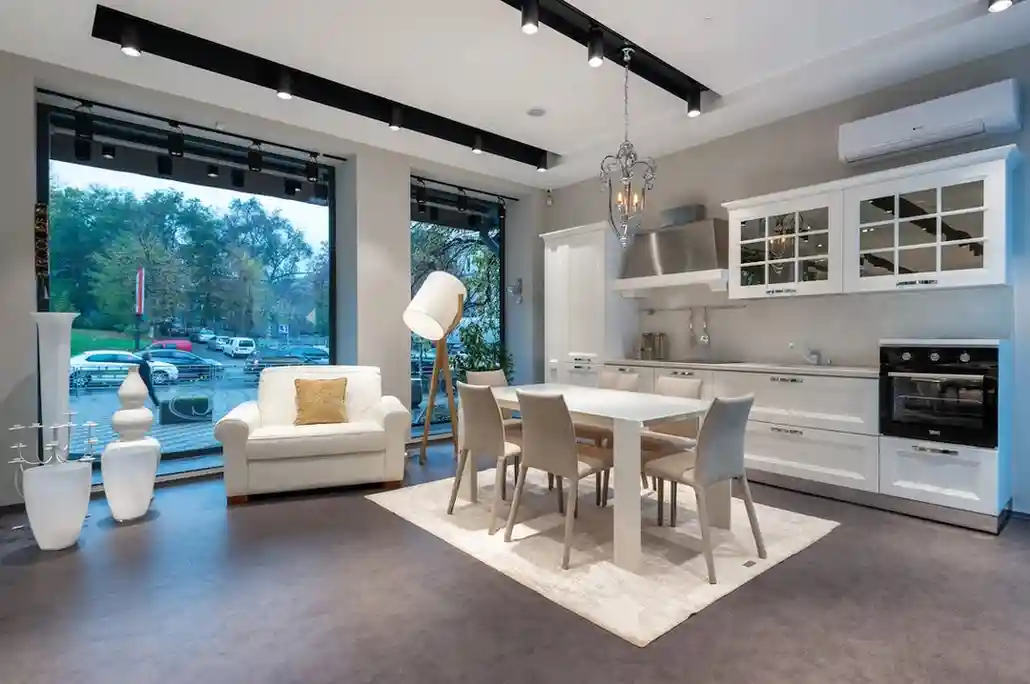
Why a Farmhouse Kitchen Sink Might Be Your Best Investment
The farmhouse kitchen sink (also called an apron-front sink) has moved beyond trend status to become a kitchen classic. With its deep basin and distinctive front panel that extends beyond the cabinet edge, this sink style offers both practical benefits and visual appeal.
I installed a fireclay farmhouse sink during my own kitchen refresh last summer, and the difference was immediate. The deep basin handles everything from soaking large pots to washing garden vegetable without splashing water everywhere. Plus, the front-facing design creates a focal point that draws compliments from everyone who visits.
Farmhouse kitchen sinks typically come in several materials, each with unique characteristics:
- Fireclay: Extremely durable with a glossy finish that resists scratches and stains
- Stainless steel: Modern look, lighter weight, and more budget-friendly
- Cast iron: Classic option with excellent durability when properly maintained
- Soapstone kitchen sink; Natural material with a distinctive matte appearance and soft feel
When considering installation, be aware that these sinks weigh significantly more than standard options—often between 100-200 pounds. “I was initially confused about whether to buy a fireclay sink or not, unsure if it was just a trend or evergreen,” shared one homeowner on a recent Reddit thread. Most respondents confirmed their satisfaction years after installation, particularly when professional installation addressed the weight support requirements.
The typical cost range for a quality farmhouse kitchen sink runs $300- $1,500 depending on material, with installation adding $200-$500 to the project. While not the cheapest upgrade, many homeowners find the combination of functionality and style worth the investment.
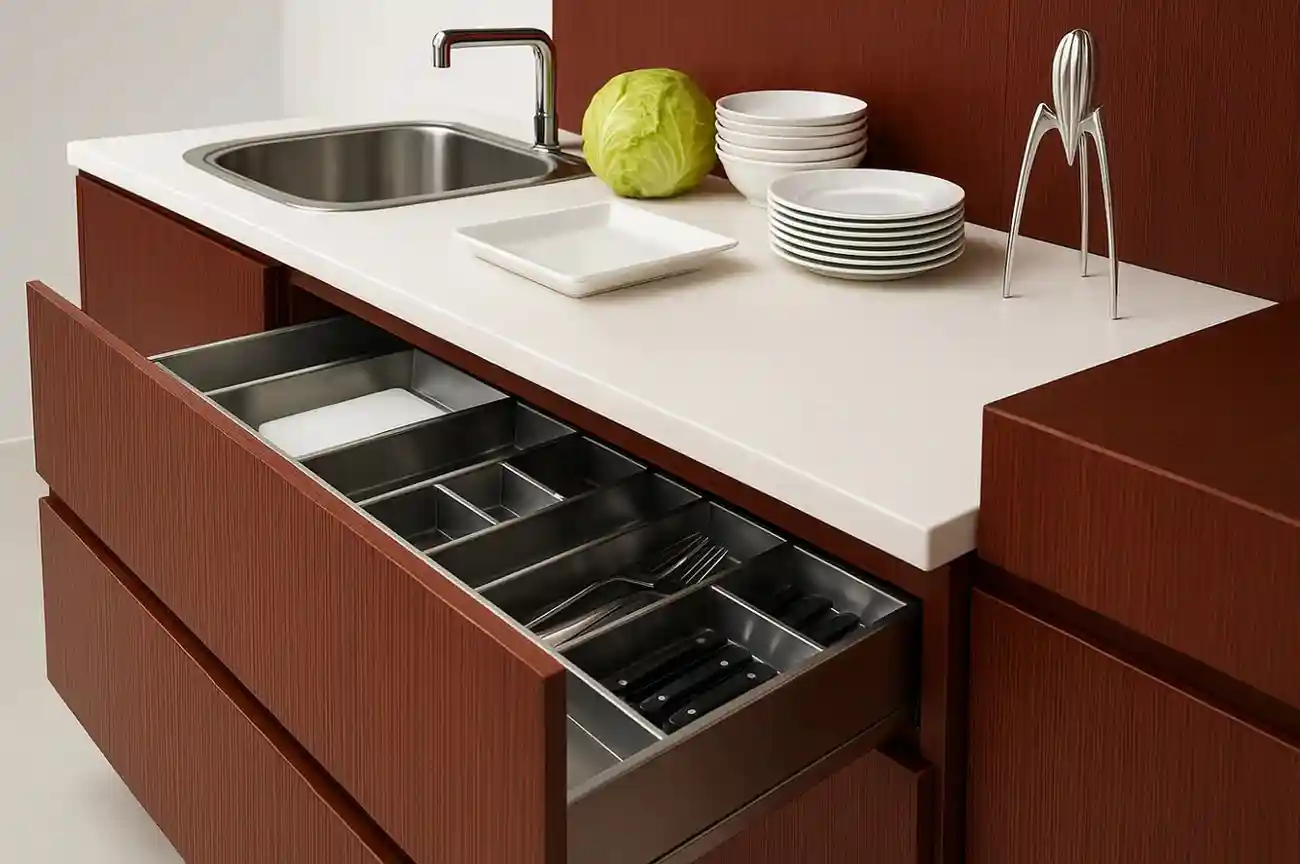
Countertop Paint: A Budget-Friendly Kitchen Makeover Option
When your countertops look tired but replacement is not in the budget , countertop paint offer a surprisingly effective solution. Modern formulations have come a long way from earlier products, providing durability that can last several years with proper application and care.
Learning how to cover kitchen countertops with specialized paint can save thousands compared to replacement. A gallon of quality countertop paint costs between $30-$60 and covers approximately 100 square feet, making this a weekend project with significant visual impact.
Before starting your kitchen countertop covering project, gather these essentials:
- Fine-grit sandpaper (220 grit works well)
- Countertop-specific primer
- Countertop paint kit (often includes base color, accent flecks, and clear topcoat)
- Small foam rollers and brushes
- Painter’s tape and plastic sheeting for protection
The process requires patience more than specialized skills. After thorough cleaning, lightly sand the surface , apply primer, then follow the specific instructions for your paint system. Most require multiple thin coats rather than one thick application.
“I painted my laminate countertops three years ago as a ‘temporary’ solution until we could afford quartz,” explains DIY blogger Sarah from Home Renovation Chronicles. “They’ve held up so well that we have redirected our savings to other projects. The key was proper preparation and applying multiple thin coats of sealer.”
For best results with countertop paint, choose colors that complement your existing kitchen cabinets farmhouse style or other elements in your space. Earth tones and neutrals like taupe and sage work particularly well with farmhouse kitchen paint colors for a cohesive look.
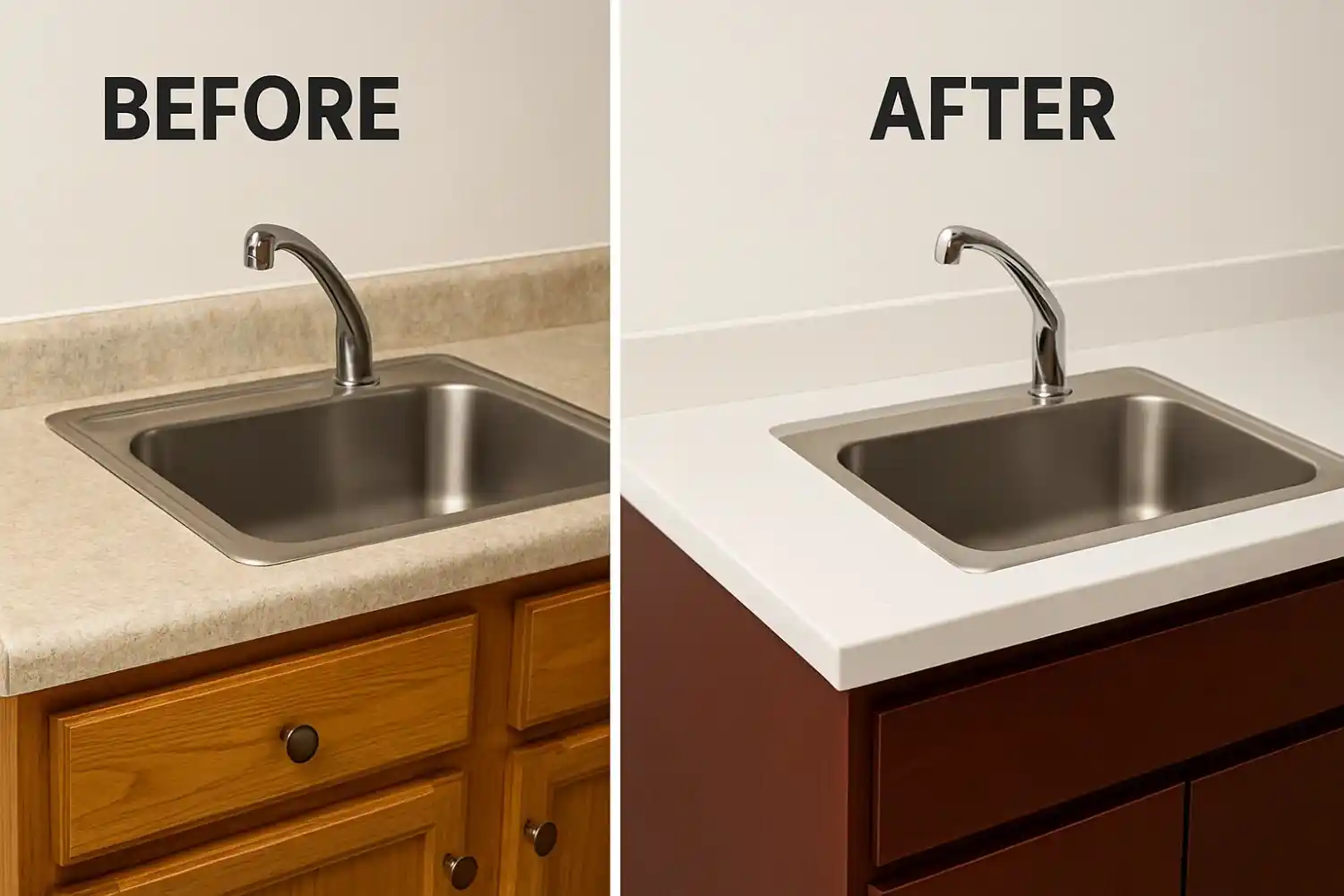
Choosing the Right Outdoor Kitchen Cabinets for Your Space
Extending your cooking space outdoors has become increasingly popular, with outdoor kitchen cabinets serving as the foundation for these functional areas. Unlike indoor cabinetry, these units must withstand temperature fluctuations, moisture and sometimes direct sunlight.
When shopping for outdoor kitchen cabinets, material selection becomes your most critical decision. Options include:
Stainless steel: The gold standard for outdoor durability, resistant to rust, water damage, and temperature changes. While more expensive initially, quality stainless cabinets often prove most economical long-term.
Marine-grade polymer: These synthetic cabinets won’t rot, warp, or fade, making them ideal for coastal areas with high humidity and salt exposure.
Treated wood: More affordable but requires regular maintenance. Cedar and teak naturally resist insects and moisture but need annual sealing.
The investment range for outdoor kitchen cabinets typically falls between $1,000-$5,000 depending on materials and configuration, with installation costs varying based on complexity and existing infrastructure.
My neighbor Tom built his outdoor kitchen in phases, starting with a simple grill station with two cabinet units. “Starting small let us test how much we’d actually use the space before going all-in,” he told me while flipping burgers during a recent cookout. “We added the refrigerator cabinet last year and it’s been a game-changer for entertaining.”
When planning your outdoor kitchen layout, consider how it connects to your indoor space. The most functional designs create easy flow between indoor and outdoor cooking areas, with complementary styles that feel like natural extensions of your home kitchen.
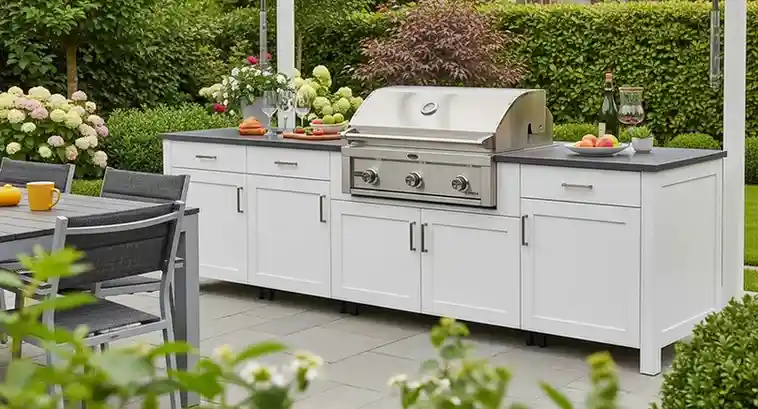
Kitchen Cabinets Farmhouse Style: Complementing Your Sink
The farmhouse aesthetic continues to appeal because it balances warmth and functionality. Kitchen cabinets farmhouse style typically feature simple lines, quality materials, and thoughtful details that support daily use while creating visual interest.
When paired with a farmhouse kitchen sink, these cabinets create a cohesive look that feels both timeless and personal. Traditional cabinets farmhouse style often includes:
- Shaker-style doors with simple frames
- Visible hinges and drawer pulls in oil-rubbed bronze or black iron
- Open shelving mixed with closed storage
- Natural wood tones or painted white kitchen cabinets
For a modern interpretation, many homeowners choose painted white kitchen cabinets or soft colors like sage green kitchen cabinets that maintain the farmhouse feel while brightening the space. These lighter cabinets make your kitchen feel larger and provide a neutral backdrop that makes your farmhouse kitchen sink stand out as a focal point.
If you’re working with existing cabinets, painting offers an affordable refresh that pairs beautifully with other farmhouse elementss. Just ensure you properly prep the surfaces and use cabinet-specific paint for durability.
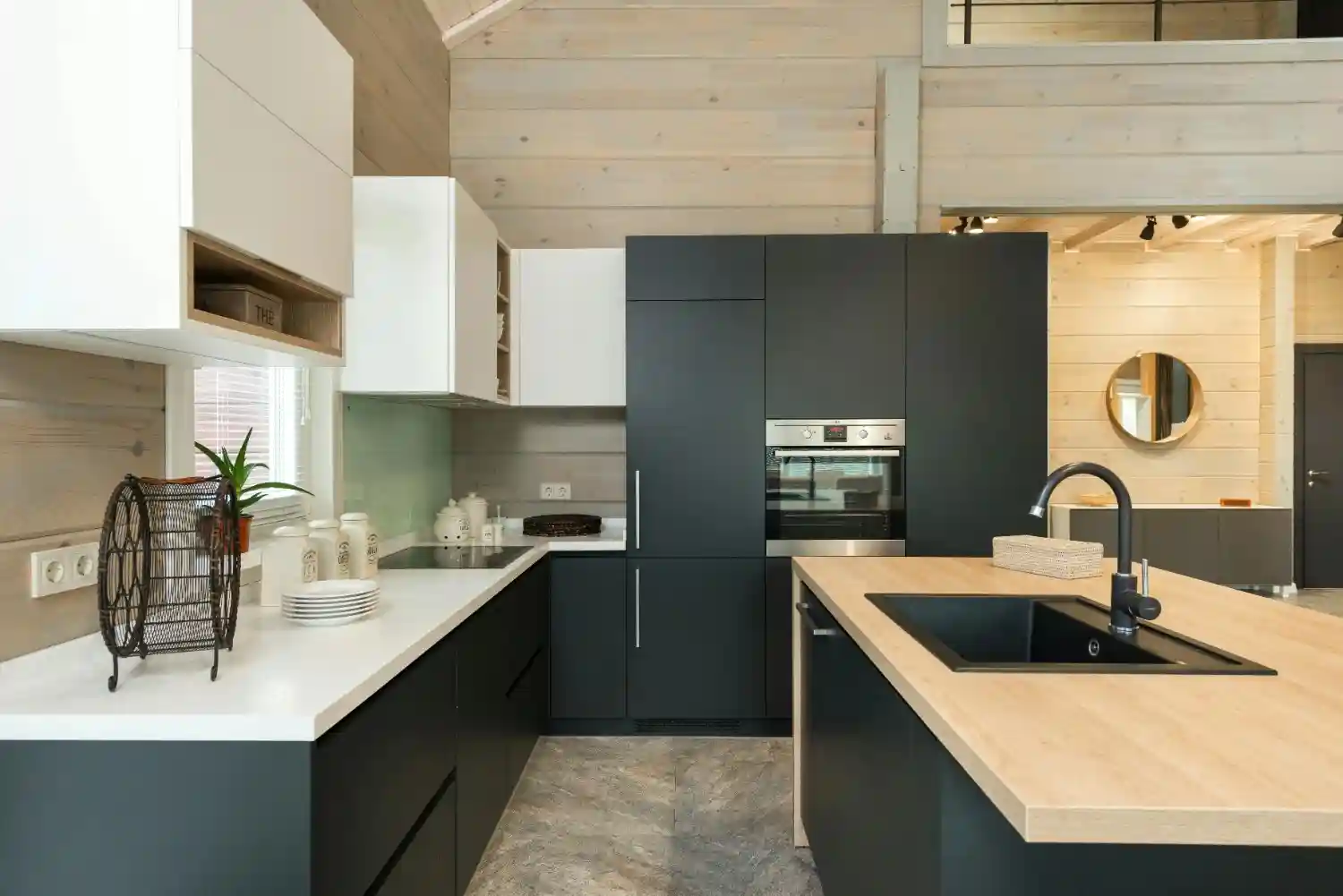
Planning a Kitchen with Sink in Island: Design Considerations
Creating a kitchen with sink in island layout opens up interesting design possibilities while improving workflow. This arrangement allows the person working at the sink to face the room rather than the wall, making cooking more social and allowing parents to monitor children while preparing meals.
When planning this layout, several practical considerations come into play:
Plumbing requirements: Adding water lines and drainage to an island increases complexity and cost. Consult with a plumber early in your planning process.
Island size: For comfortable use, allow at least 36 inches of clearance on all sides of your island. If your kitchen with sink in island will include a dishwasher, factor in door clearance when open.
Sink placement: Center placement creates symmetry, while offset placement might better serve your workflow. Consider how you use your sink most frequently.
A white kitchen with island containing a farmhouse sink creates a striking focal point, especially when the island is painted in a contrasting color. This design approach works particularly well in open-concept homes where the kitchen is visible from living areas.
“We debated sink placement for weeks before deciding on the island,” shares home renovator Jessica on her Instagram account @farmhousekitchenreno. “Having the sink in the island means I can talk with family while doing dishes or prep work. It's completely changed how we interact in the kitchen.”
How to Cover Kitchen Countertops with Paint: Step-by-Step Guide
If you’re ready to try countertop paint as a solution for dated surfaces, following the right process makes all the difference in durability and appearance. Here’s a simplified guide to get you started:
- Preparation (Day 1)
- Remove everything from your countertops
- Clean thoroughly with TSP (trisodium phosphate) to remove all grease
- Repair any chips or damage with epoxy filler
- Lightly sand the entire surface with 220-grit sandpaper
- Wipe away all dust with a tack cloth
- Priming (Day 1)
- Apply painter’s tape to protect walls, backsplash, and sink
- Apply countertop-specific primer with a foam roller
- Allow to dry completely (usually 8+ hours)
- Painting (Day 2)
- Apply base coat according to kit instructions
- For stone effects, add accent colors while base is wet
- Allow to dry completely between coats
- Apply at least 2-3 thin coats for best coverage
- Sealing (Day 3)
- Apply clear topcoat sealer in thin, even layers
- Most systems require 2-3 coats of sealer
- Allow full cure time before using countertops (typically 3-7 days)
This project pairs well with updating kitchen curtains or adding luxury kitchen rugs for a coordinated refresh. The total cost typically runs $100-$200 for materials, making it one of the most budget-friendly kitchen upgrades available.
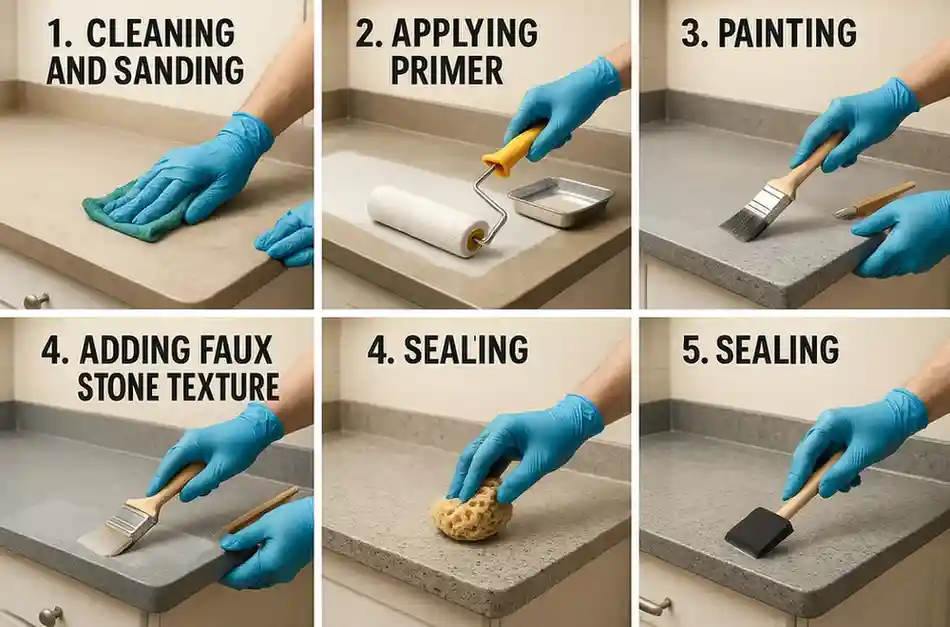
Popular Farmhouse Kitchen Paint Colors for a Cohesive Look
Color coordination ties your kitchen elements together, creating a harmonious space. When selecting farmhouse kitchen paint colors, consider how they’ll interact with your sink, countertops and cabinets.
Traditional farmhouse palettes feature warm whites, soft neutrals, and muted natural tones. Some particularly effective combinations include:
- Warm white cabinets with sage green walls and natural wood accents
- Soft blue-gray walls with cream cabinets and wooden countertops
- Muted terra cotta with white trim and natural stone surfaces
For painted white kitchen cabinets, consider adding depth with slightly different white tones. Using pure white for trim against a softer white or cream for cabinets creates subtle dimension without feeling busy.
If you’ve installed a white fireclay farmhouse kitchen sink, consider how your countertop color will frame it. Darker countertops create dramatic contrast, while lighter surfaces create a more seamless look.
Don’t forget about kitchen art when planning your color scheme. Simple botanical prints, vintage cooking implements, or black and white photographs can enhance your farmhouse aesthetic while adding personality to your space.
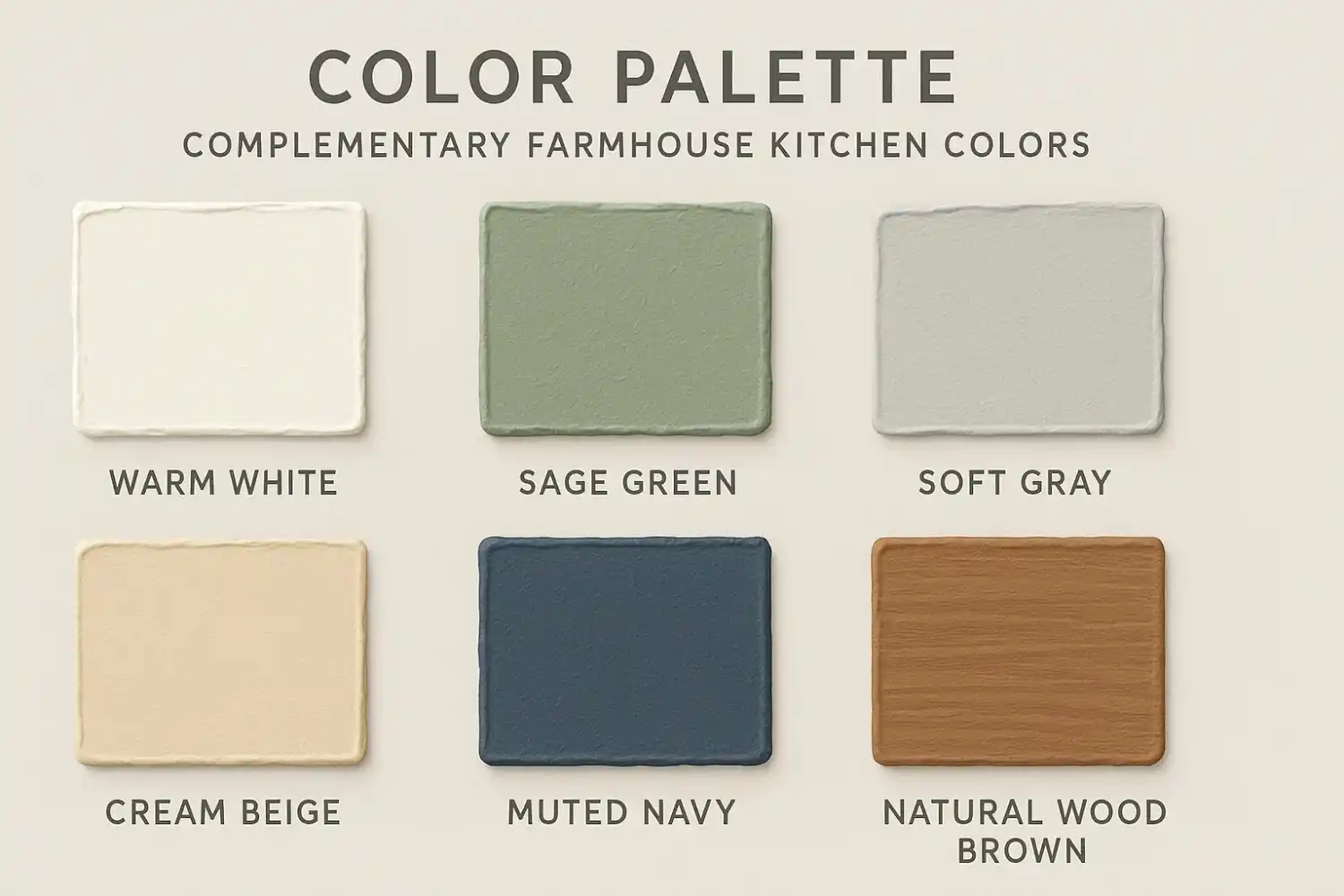
Final Words: Creating Your Ideal Kitchen
The most successful kitchen upgrades reflect how you actually use your space. A professional chef might prioritize a deep farmhouse kitchen sink for washing produce and soaking pots, while a family that entertains frequently might focus on outdoor kitchen cabinets for expanded cooking and gathering space.
Start by identifying your kitchen pain points - what frustrates you daily? Is it insufficient sink space? Countertops that look tired no matter how well you clean them? Limited storage? Then prioritize upgrades that directly address these issues.
Remember that kitchen improvements often return much of their cost when you sell your home. According to real estate professionals, functional upgrades like quality sinks and additional outdoor living space typically provide better return on investment than purely decorative changes.
Whether you tackle one project at a time or coordinate several upgrades, focus on quality materials and proper installation. Even budget-friendly options like countertop paint require attention to detail for lasting results.
Your kitchen should work for your lifestyle while bringing you joy. Sometimes the smallest changes—like the perfect farmhouse kitchen island stools or thoughtfully chosen kitchen art—complete the space in ways that major renovations cannot.
What kitchen upgrade are you planning next? Whatever you choose, approach it with both practicality and personal style in mind, and you will create a space that serves you well for years to come


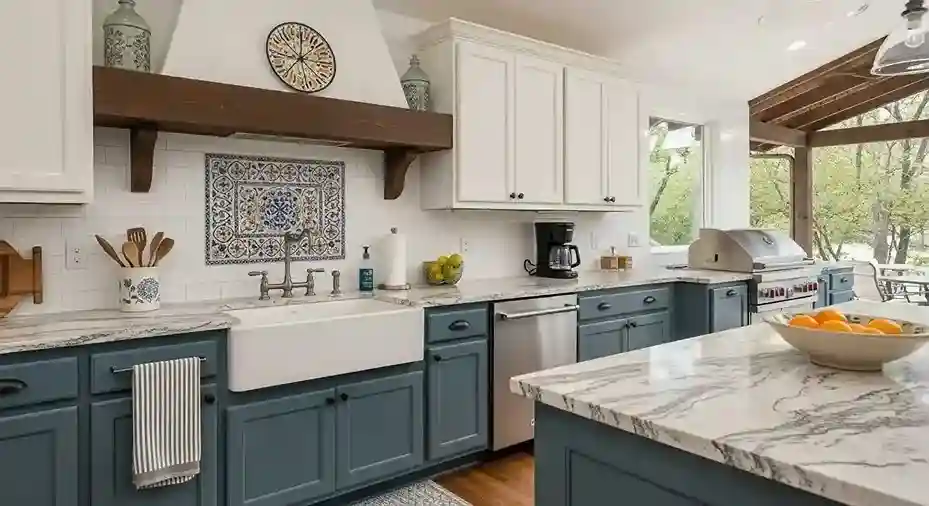







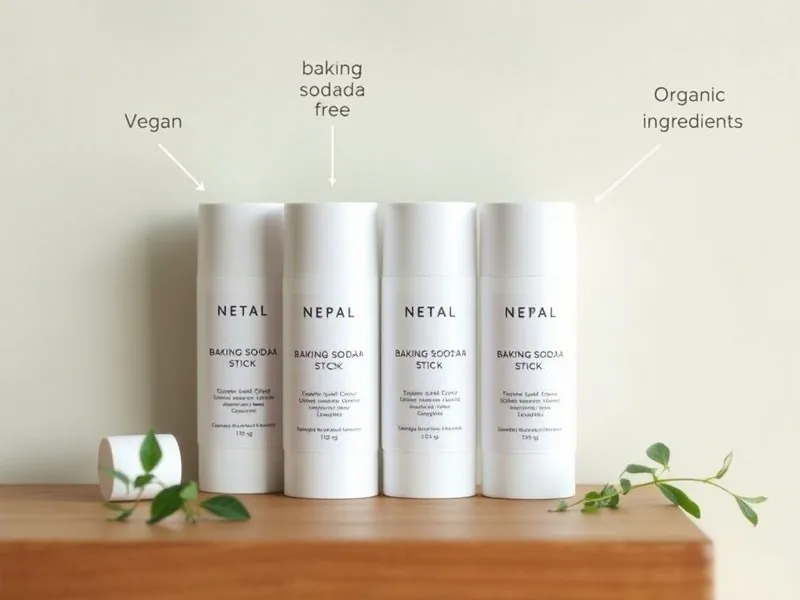



Vestibulum euismod, leo eget varius gravida, eros enim interdum urna, non rutrum enim ante quis metus. Duis porta ornare nulla ut bibendum
Rosie
6 minutes ago